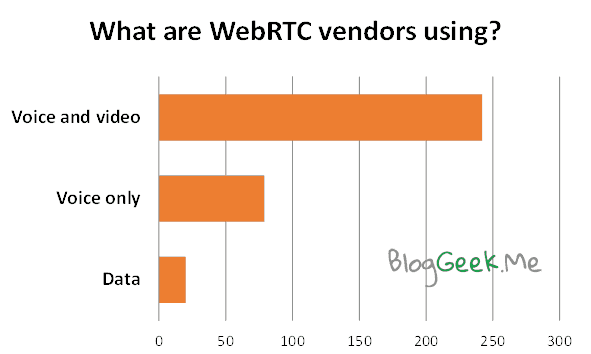Video calling is the least and most desired feature in WebRTC.
I’d like to throw my thoughts on this page, and see where it leads.
See also the article on video call API.
Selfies and our self awareness to cameras
During WebRTC Global Summit, in one of the panels someone said:
for the most part, I don’t want people to see me
I don’t remember who it was, but I was one of the youngest in the room and I know I am old already.
And for the most part, people are just fine with how they look on camera. Otherwise, how can you even explain selfies? From the infographic:
- Over 1 million selfies are taken a day
- 50% of men and 52% of women have taken a selfie
- They get shared on Facebook (48%), Whatsapp (27%), Twitter (9%) and other places
- According to Samsung, 30% of the photos taken by people aged 18-24 are selfies
- Selfies are most popular in Australia, followed by the US and Canada
Here’s what this reveals to me:
- We’re just fine with how we see ourselves, at least those who grew up with cameras around them
- People share their selfies with friends and family, but also publicly
- The next generation joining our workforce won’t shy from cameras or video calls
- I am too old
Video is Abused when it comes to WebRTC
Too many vendors are focusing on video when it comes to WebRTC. Around a third of those who use it tinker with video calling in one form or another. The space is so crowded that I get fatigued discussing the solutions of such vendors (it gets boring after the 10th time when you already worked for 13 years in a company developing and selling video conferencing technology).

The problem is that most vendors do the same – they just place a paint-job on top of the basic “hello world” implementation of a WebRTC video call and try selling it as the next Skype.
There’s a lot to be done in the video space with WebRTC, but I’d advise companies to treat video as they would voice here – focus on the use case and context and not in delivering a video service. Money is to be made out of the context and not out of connecting a video (or voice) call. That market is racing down to zero.
Enterprise Connect 2014 and Video
I’ve been to Enterprise Connect 2014 and walked the expo hall. Video took center stage everywhere. It was as if the only thing that enterprises care about today is having unified communication systems that use 80″ monitors.
When I bumped into an old friend of mine, he said that the magic of video is the large screens – they bring people into the booths – they are still a novelty. But at the end of the day, a lot of the vendors showing video front and center weren’t really selling video as their core business.
Flashy? Yes.
Useful? Not necessarily.
Data anyone?
WebRTC has a data channel. This one enables sending any arbitrary data across browsers. Every week there’s a new use case around it, which fascinates me. It is as if any person looking at it sees something different that it can be used for.
And this brings the question: when all hell breaks loose talking about the mandatory video codec in WebRTC – do we just ignore the fact that WebRTC has so much to offer without it already?
–
Video is the most shiny object in WebRTC, but I am not sure it is the most important.


Well, a lot of people that post selfies post it on using an app with a filter or on Instagram which has filters.
Obviously, Javascript running in the browser can be used to apply a filter to a video as well.
You only talked about video and data. What is wrong with voice, for example without revealing your telephone-number to people ?
Yes, there are a lot of options there, but this can be integrated in a website you are looking to buy a product from ? This is where data fits really well too, you can send meta-data along of the page the person is looking at. Or information about the browser session, like the products in the shopping basket, etc. And should be pretty easy to connect to VoIP/PBX as well.
I think it might even be worse, I think the promise of video is slowing down adoption of data and sound/voice.
Lennie,
You phrased it best in the end – this is what I were trying to say: the promise of video is slowing down adoption of data and sound/voice.
Thanks for that one.
I keep forgetting about it, because only Chrome currently has it, but I think screen/window/tab sharing with voice is a maybe more important than video.
The very phenomenon that you note is very likely why there are so many bodies littering the path that traces the evolution of video calling in consumer space. Just the other day I saw an Ojo Phone as a goofy set decoration on a CBS drama.
The use of video is not yet pervasive because it’s just not always convenient or even desirable. Yet there are clearly use cases for which high-quality video is compelling.
What I don’t see much at present are players in WebRTC space realizing the synergy that can arise from v+a+d in one mechanism. I can imagine a WebRTC-based set-top-box that uses the data channel for remote control messaging to the cloud-based video server. Also to enhance the second screen presentation on the viewers tablets, that is also serving as a programmable, personalized remote control.
True